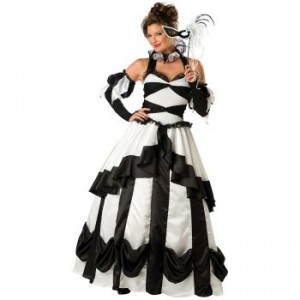Today is Mardi Gras also known as Fat Tuesday. The holiday is said to date back to Medival Europe, but in the United States, the earliest reference to Mardi Gras "Carnival" appears in a 1781 report to the Spanish colonial governing body. That year, the Perseverance Benevolent & Mutual Aid Association is the first of hundreds of clubs and carnival organizations formed in New Orleans.
By the late 1830s, New Orleans held street processions of maskers with carriages and horseback to celebrate Mardi Gras. Newspapers began to announce Mardi Gras events in advance.
In 1871, Mardi Gras's second "Krewe" is formed, the Twelfth Night Reveler's, with the first account of Mardi Gras "throws."
1872 was the year that a group of businessmen invented a King of Carnival -- Rex -- to parade in the first daytime parade. They introduced the Mardi Gras colors of purple, green and gold; the Mardi Gras song, and the Mardi Gras flag.
In 1873, the first floats were constructed entirely in New Orleans instead of France. In 1875, Governor Warmoth of Louisiana signs the "Mardi Gras Act" making it a legal holiday in Louisiana, which is still is.
Most Mardi Gras Krewes today developed from private social clubs that have restrictive membership policies. Since all of these parade organizations are completely funded by its members, we call it the "Greatest Free Show on Earth!" - Mardigrasneworleans.com
Mardi Gras is French for "Fat Tuesday," Fat Tuesday comes from the fact that it falls the Tuesday before Ash Wednesday and it is the last night of celebrations and to feast before Lent begins.
I was born on Fat Tuesday, which is why my Mom says I enjoy parties and food so much. I love all the colors, masks, and costumes associated with Mardi Gras.
The history of Mardi Gras masks goes back to the 1800s when elitist society in New Orleans participated in Mardi Gras events. They would not unmask themselves to cloud them in secrecy.
One of the most popular Mardi Gras recipes in the King Cake. The cake often has a small plastic baby, inside, and the person who gets the piece of cake with the trinket has various privileges and obligations (such as buying the cake for the next celebration).
KING CAKE RECIPE
- 1 package (1/4 ounce) active dry yeast
- 1/2 cup warm water (110° to 115°)
- 1/2 cup warm milk (110° to 115°)
- 1/3 cup shortening
- 1/3 cup sugar
- 1 teaspoon salt
- 1 egg
- 4 to 4-1/2 cups all-purpose flour
- 2 cans (12-1/2 ounces each) almond cake and pastry filling
GLAZE:- 3 cups confectioners' sugar
- 1/2 teaspoon vanilla extract
- 3 to 4 tablespoons water
- Purple, green and gold colored sugar
Directions
- In a large bowl, dissolve yeast in warm water. Add the milk, shortening, sugar, salt, egg and 2 cups flour. Beat on medium speed for 3 minutes. Beat until smooth. Stir in enough remaining flour to form a soft dough (dough will be sticky).
- Turn onto a floured surface; knead until smooth and elastic, about 6-8 minutes. Place in a greased bowl, turning once to grease top. Cover and let rise in a warm place until doubled, about 1 hour.
- Punch dough down. Turn onto a lightly floured surface; divide in half. Roll one portion into a 16-in. x 10-in. rectangle. Spread almond filling to within 1/2 in. of edges. Roll up jelly-roll style, starting with a long side; pinch seam to seal. Place seam side down on a greased baking sheet; pinch ends together to form a ring. Repeat with remaining dough and filling. Cover and let rise until doubled, about 1 hour.
- Bake at 375° for 20-25 minutes or until golden brown. Cool on a wire rack. For glaze, combine the confectioners' sugar, vanilla and enough water to achieve desired consistency. Spread over cooled cakes. Sprinkle with colored sugars. Yield: 2 cakes (12 servings each). - Tasteofhome.com






No comments:
Post a Comment